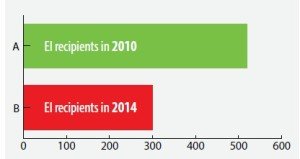
By Gagandeep Ghuman
Published: Oct 11, 2014
From packing timber to running a sophistical machine, Jen Foreman had carved a place for herself at a wood-manufacturing shop in Squamish. She made $20 an hour and was planning to buy a trailer home with her boyfriend. But then the recession came and swept her job—and those plans—away.
In 2009, as many as 420 people received EI and she was one among them. In 2010, that number stood at 520 and was on an upward trend touching 560 the next year, highest in the province. 
“It was so stressful going from operating machinery to collecting EI,” recalls Foreman.
In the months that followed, Jen applied for about 30 jobs but still couldn’t get a job that would pay as much. She then enrolled for a skills training program for people laid off in the wood industry. She trained as a massage therapist for 22 months and found a job two years ago with Squamish Integrated Health.
If five years ago Squamish topped EI claims, it’s losing that dubious honour.
In the September of 2013, for instance, there were only 210 people on EI. In May 2014, the latest month for which the data is available, there were only 300 people on EI roll.
(This number isn’t parsed for the type of recipients; it may include new moms on EI, for example.)
But other indicators point at an improving employment situation. Training Innovation keeps track of the clients it serves and 2009 and 2010 were the busiest for the local office.
Training Innovation helped 3,207 people with career related searches in 2009, a year when the global recession rumbled through town. Training Innovation’s Tina Strehlke says record unemployment resulted in an “unprecedented” number of clients accessing service.
In 2010, the demands for services stayed high with more people looking for work after the Olympics. As many as 3103 people walked in the Squamish office to access services that year.
It was the same story at the Whistler office of Training Innovation.
“Our office in Whistler experienced unprecedented service levels throughout October to December 2010,” Strehlke said.
Fast forward to 2014 and the numbers reveal a five-fold reduction in people accessing the Training Innovation service. Till date, 413 people have accessed Training Innovation for career services. Last year, only 702 people walked through Training Innovation’s Squamish office.
Meantime, construction remains Squamish’s top job-generating industry, accounting for 14 per cent of the labour force, followed by retail and accommodation and food services.
Construction also generates the most economic activity in town: With 66 new business licences, it topped the list of all business licenses given out by the district of Squamish in 2014 so far.
According to a 2013 SLRD report, high-tech is the second-fastest growing industry next to public sector jobs by 2031. The report predicts a 60 per cent growth in tech jobs by 2031.
Jen Foreman, meanwhile, married her boyfriend and they have bought a home in Brackendale.
“I’m fortunate to have found a job in Squamish,” she said.

